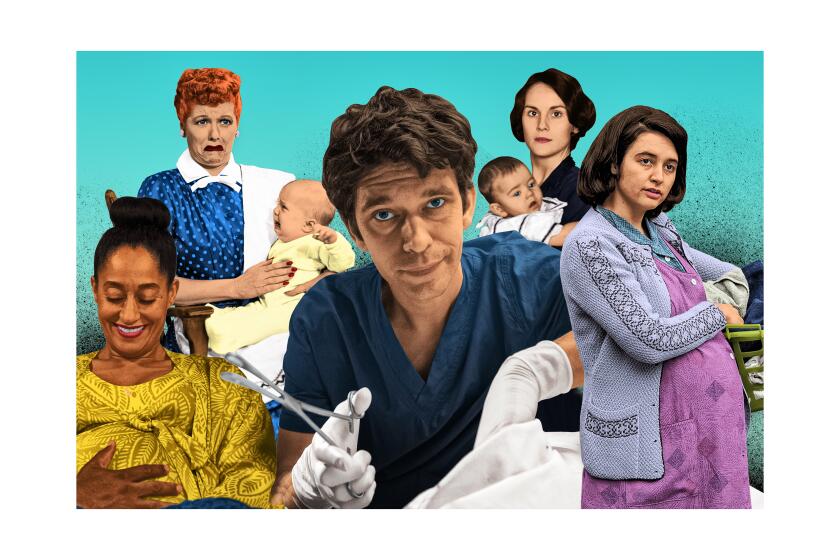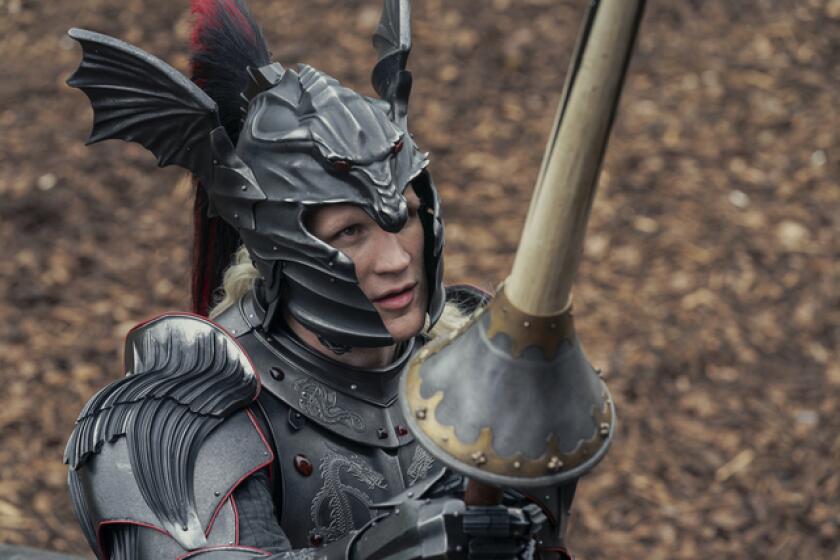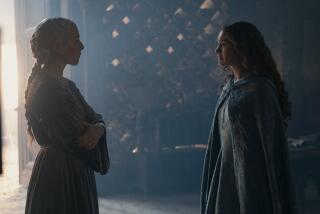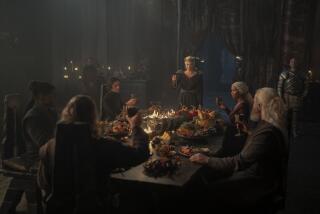How ‘House of the Dragon’ pulled off the premiere’s ‘extreme’ childbirth scene
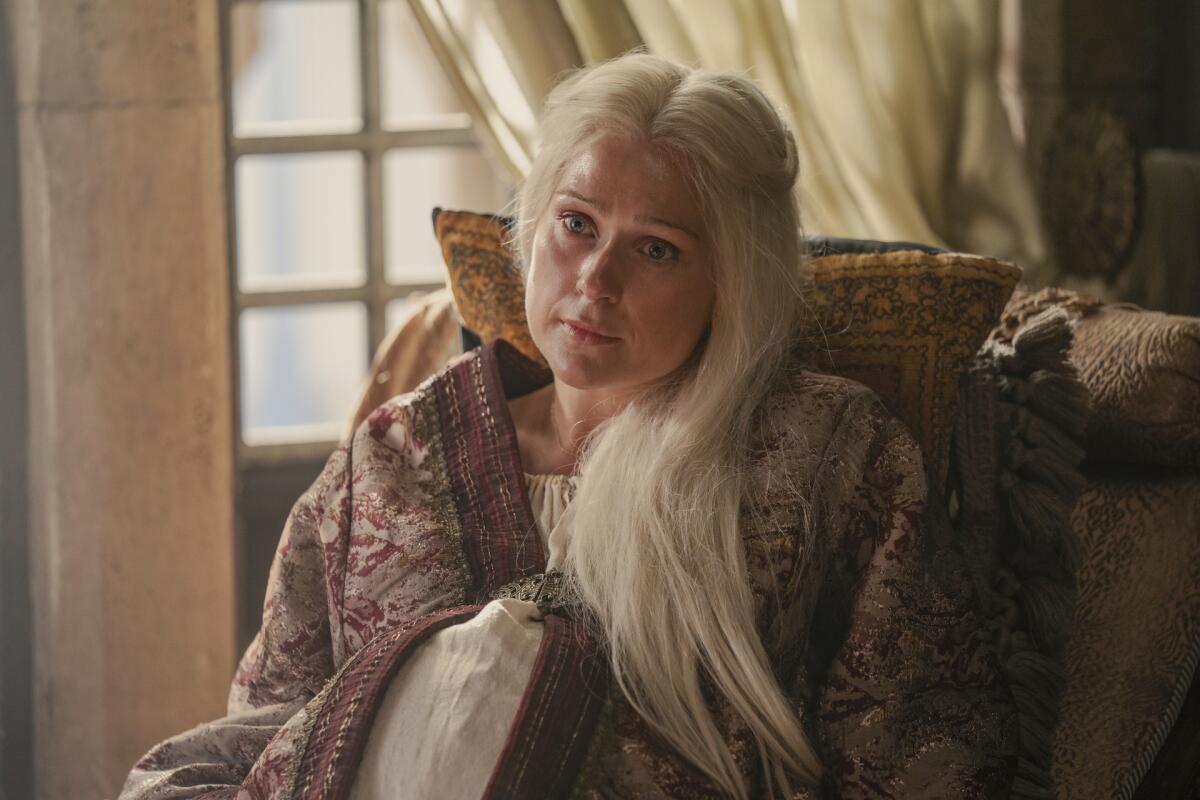
Warning: The following contains spoilers from the series premiere of “House of the Dragon.”
If there’s anything viewers learned over eight seasons of “Game of Thrones,” it’s that, in Westeros, no one is too important or too beloved to suffer a sudden, horrible death.
Fittingly, the long-awaited prequel “House of the Dragon” opens with a death — two, actually — as memorable as they are poignant. In Sunday’s episode, “The Heirs of the Dragon,” Queen Consort Aemma Targaryen (Sian Brooke) bleeds to death after a crude Caesarean section performed without her consent or knowledge. The attempt to save her child and secure a male successor to the Iron Throne is ultimately futile: The infant lives for only a few hours.
The brutal sequence, intercut with a violent jousting battle, highlights the dangers faced by women in this mythical, quasi-medieval realm, but it also has surprising modern-day relevance in a perilous post-Roe moment.
“Each birth in this show has a theme, just as the battles I’ve filmed in the past have a central concept. The theme of this birth scene was ‘torture,’” co-showrunner Miguel Sapochnik wrote in an email to The Times. He directed the episode, as well as many of the most epic installments of “Game of Thrones,” including “Battle of the Bastards” and “The Long Night.”
‘This Is Going to Hurt’ created TV’s most accurate portrayal of childbirth — and its ‘sticky, sweaty, bloody’ vision could change the conversation.
“The hope and intention of the show — beyond the primary one of entertainment — is to shine a light on how the experience of men and women in this world has parallels to our own past and present.”
Created by George R.R. Martin and Ryan Condal, “House of the Dragon” opens nearly two centuries before the period depicted in “Game of Thrones.” The seemingly kindhearted King Viserys Targaryen (Paddy Considine) rules Westeros, and his devoted wife, Aemma, is pregnant with what they hope will be the next Targaryen king. Though she has had multiple stillbirths and miscarriages, Aemma considers it her duty to produce an heir.
“This is how we serve the realm as royal women. Childbirth is our battlefield. We must learn to face it with a stiff lip,” she tells her spirited, dragon-riding teenage daughter, Rhaenyra (Milly Alcock), who clearly has different plans for her future.
That resolve is tested when Aemma goes into labor. The baby is breech, and attempts to move it are unsuccessful, leaving few options for a safe delivery. The grand maester (David Horovitch) explains the predicament to Viserys: “During a difficult birth, it sometimes becomes necessary for the father to make an impossible choice: to sacrifice one, or to lose them both.”
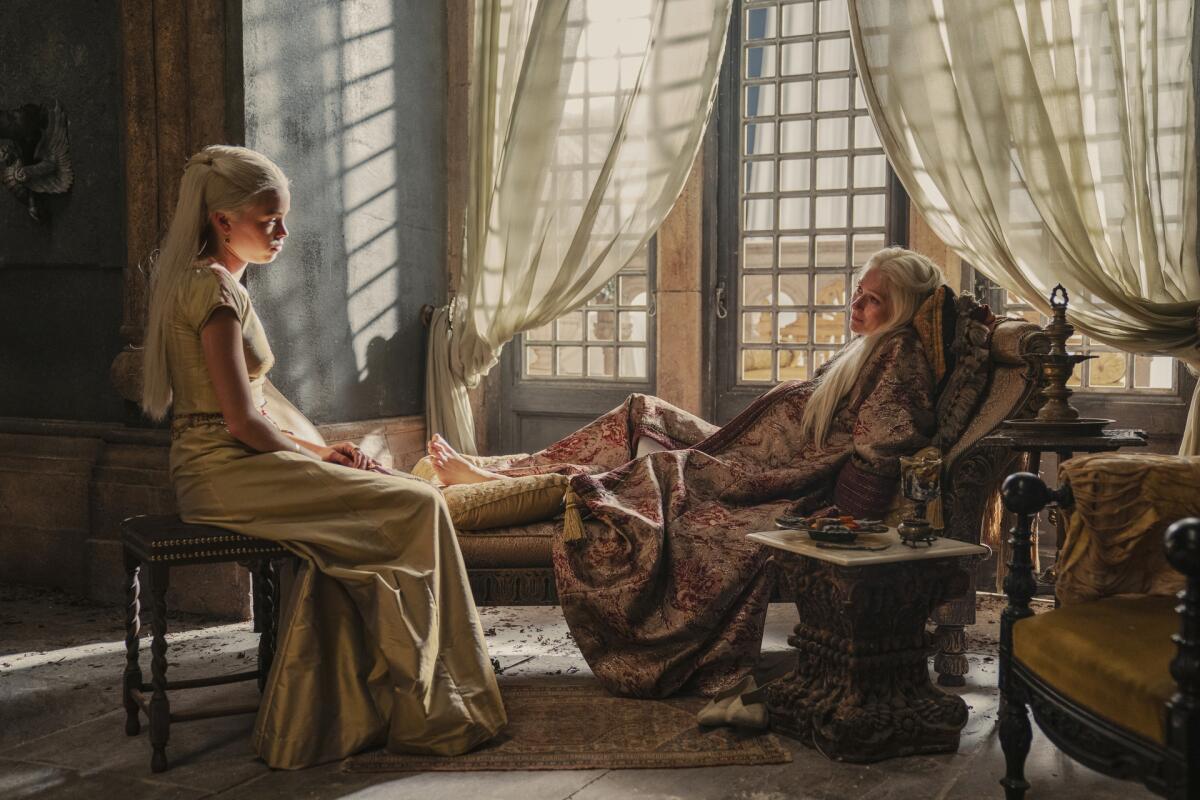
Viserys grants permission for them to proceed with the unmedicated Caesarean section (which presumably goes by a different name in Westeros). Though they know it will kill her, Aemma is never told what’s about to happen — much less given a say in the matter.
Confused, then terrified, Aemma is pinned to the bed by a team of midwives as the grand maester makes an incision to her abdomen and removes the infant. She screams in agony as blood pours onto the sheets. Moments later, Viserys weeps over her lifeless body, which lies on a blood-soaked bed. His infant son also dies within hours.
“I know it may sound extreme, but we wanted it to be difficult to watch. We wanted people to remember that no matter what they thought of Viserys, he did this and he could never take it back,” said Sapochnik. “It is the story’s inciting incident and needed to be strong and unflinching.”
“It’s quite hard to think now, as a woman, to put yourself in [Aemma’s] position. It’s so vulnerable to think, ‘That’s what you are: a vessel for childbirth,’” Brooke said in a phone interview. “You’ve got this battle showing man’s eternal quest for power and status. And then within that, you’ve got this woman who’s at the mercy of a man’s decision.”
Which characters matter? Which Houses are a factor? Why are their names so hard to spell? We have viewers of the ‘Game of Thrones’ prequel covered.
“You think you’ve made this huge leap forward, with women being able to make decisions about their own bodies,” she added. “It’s quite shocking, that, sadly, there is some similarity between that and centuries ago.”
Brooke recalled trying to explain the character to her two small boys. “In those times, we didn’t have the wonders of modern medicine. It was very dangerous, and this lady passes away,” she said. “And my youngest said to me, ‘Oh, Mommy, I’m so glad I’m not a woman.’”
Though the series is set in a fantasy world, Aemma’s fate is a reminder of the suffering endured by countless women throughout history before anesthetics, antibiotics and other modern medical advancements. Her horrific death — and the specific language used by the men who decided her fate — also resonates powerfully in post-Roe America, where newly restrictive laws are forcing pregnant people to delay or even forgo treatment for dangerous complications.
Sapochnik said the wording of the maester’s explanation in the scene — “a father gets to choose” — was specific and intentional, “the idea being that Queen Aemma doesn’t get to choose her fate even though she’s right there. King Viserys and the grand maester never think to consult her, and so she is powerless over a decision about her own body.”
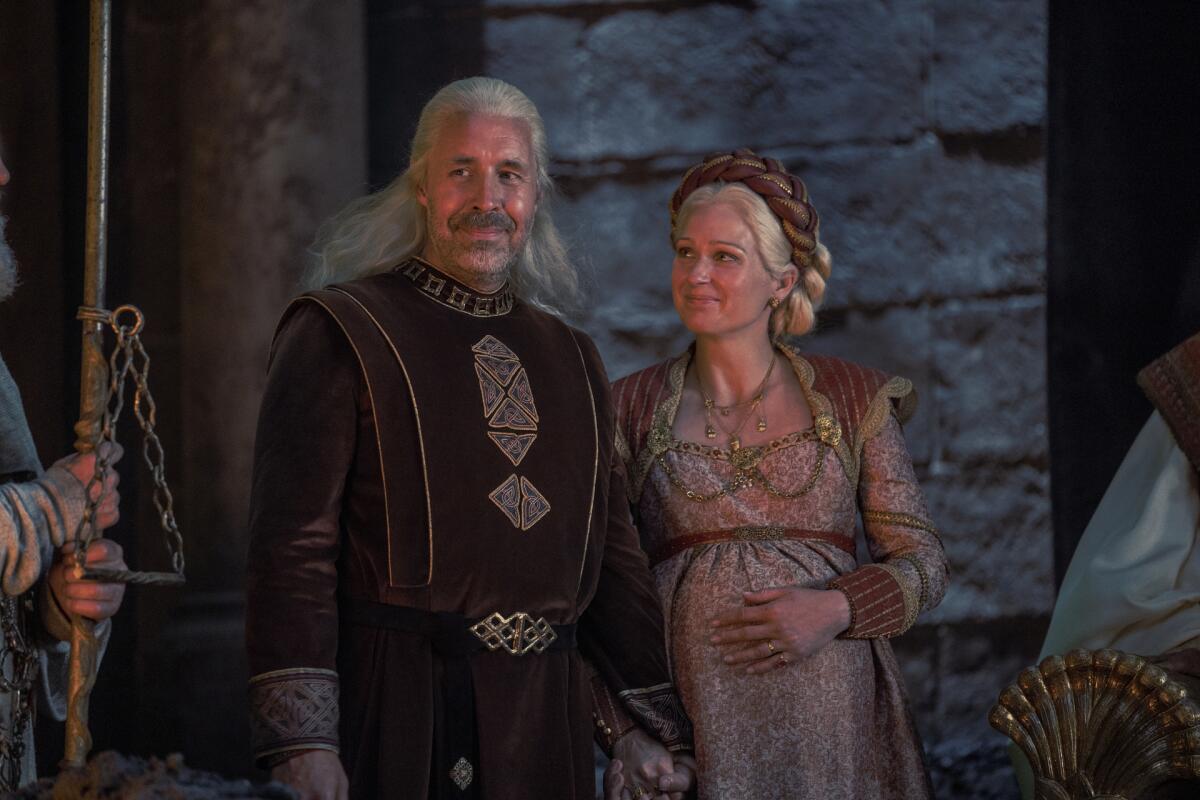
Even though the scene was written, filmed and edited long before the Supreme Court overturned Roe vs. Wade in June, “It feels more timely and impactful than ever,” said Sapochnik.
The director had two midwives on set during filming “to talk us through the reality of a Caesarean without anesthesia or modern instruments and medicine,” he said. “We also tried to make sure to represent the effect of the resulting blood loss on the mother so that it was clear what killed her.” (One of the midwives also appears in the scene.)
Brooke said she spent about a day and a half “pinned to the bed with my legs akimbo” filming the birth — not a comfortable situation by any means, but nothing compared to the real thing. Prior to filming, the actors also had a day-long rehearsal to make sure they were comfortable working with the prosthetics and other special effects that made the labor so viscerally lifelike.
“I had a prosthetic belly, and then the special effects and the prop makers filled the belly with blood,” said Brooke. A pump ensured that when the incision was made, blood flowed realistically.
Sapochnik’s goal was “not to shy away from what was happening but also not to sensationalize it,” he said. This meant a painstaking editing process that started with an “all-in version” of the childbirth sequence. Then they began “slowly whittling away ... what was too much or felt gratuitous or a repeat beat.” Once they intercut it with the jousting sequence, some moments in the birth became redundant, so they made further cuts. Taken together, “the scene is meant to be a distillation of the experience of men and the experience of women during this time.”
They also tweaked the scene’s point of view, “shifting away from Viserys’ experience of the birth onto Aemma’s, until we felt we’d found the right balance that neither glorified nor shied away from the point we were trying to make,” he said.
Finally, the showrunners played the scene for as many women as possible to get their feedback. “We were anxious not to get it wrong. And unanimously, the feedback was positive,” he said. “Some felt it wasn’t violent enough.”
More to Read
The complete guide to home viewing
Get Screen Gab for everything about the TV shows and streaming movies everyone’s talking about.
You may occasionally receive promotional content from the Los Angeles Times.
